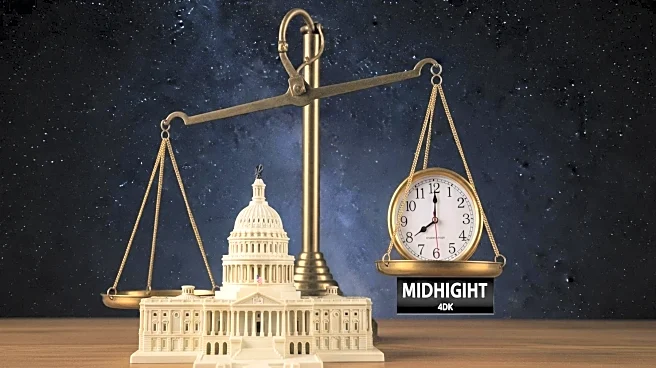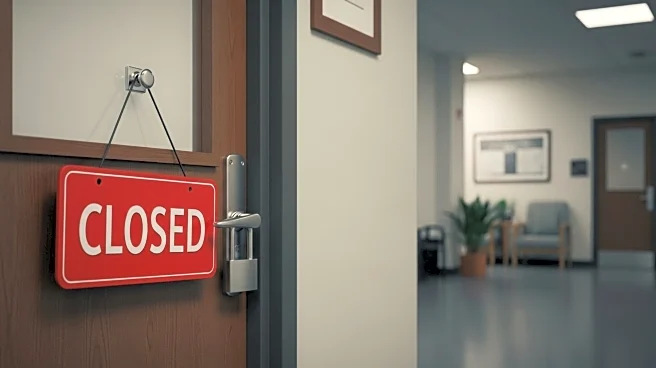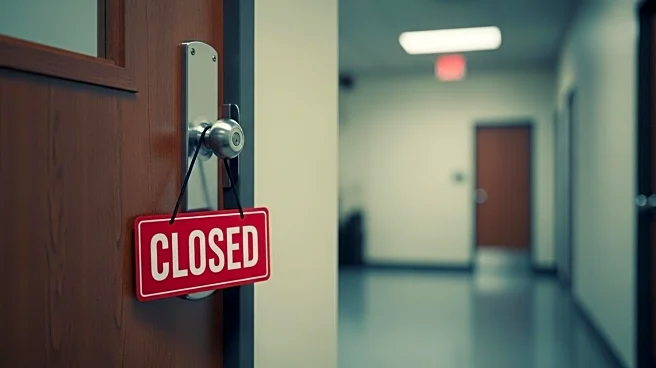What's Happening?
The U.S. Senate has failed to pass crucial stopgap funding measures proposed by both political parties, setting the stage for a federal government shutdown at midnight. This development follows a series of unsuccessful attempts to reach a bipartisan agreement on the budget, which is necessary to keep government operations running. The inability to pass these funding bills means that non-essential federal services will be halted, and many government employees will face furloughs. The situation has been closely monitored by various stakeholders, including government officials and the public, as the deadline for avoiding a shutdown loomed.
Why It's Important?
The failure to pass the funding bills has significant implications for the U.S. economy and public services. A government shutdown can disrupt various sectors, including national parks, federal agencies, and public services, affecting millions of Americans. Economically, it can lead to delays in government contracts and payments, impacting businesses and potentially slowing economic growth. Politically, the shutdown reflects deep divisions within Congress, highlighting challenges in reaching consensus on fiscal policies. The shutdown could also influence public opinion and voter sentiment, particularly as it affects everyday services and government operations.
What's Next?
With the government shutdown now imminent, attention will turn to how long it will last and what measures will be taken to resolve the impasse. Lawmakers may face increased pressure from constituents and interest groups to find a solution quickly. The shutdown's duration will depend on the ability of Congress to negotiate and pass a new funding bill. In the meantime, federal agencies will implement contingency plans to manage essential services, and discussions are likely to continue behind the scenes to reach a compromise.










